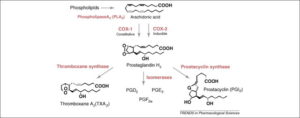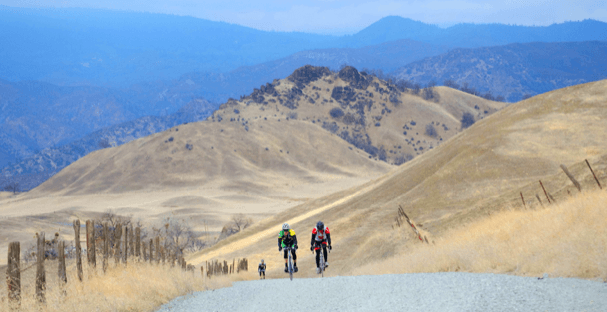BY JENNY CORSO, CHIEF SCIENTIST, DARWIN BRANDS
“If exercise could be packed into a pill, it would be the single most widely prescribed and beneficial medicine in the nation.” – Dr. Robert Butler, Founder, National Institutes on Aging
If asked, I wonder what Dr. Butler would say about cannabidiol (CBD), or the combined use of CBD to supplement exercise? The market is booming with an array of choices for just about anybody’s body – CBD tinctures, capsules, CBD-enriched protein powders, some of them full-spectrum, some with CBD only, each with their own claim on how CBD can provide therapeutic value.
One niche is promoting the use of CBD as a supplement touted to give a better workout or active experience and help recover from exercise. It leads to more gains, right? Before we chalk it up to either the best thing since sliced bread, or opposite, the likes of a trendy fad diet, the concept of using CBD as a training aid deserves some scientific attention.
According to research, CBD may be anti-inflammatory, antioxidant, a 5-HT1a (serotonin receptor) agonist, and GABA channel agonist. This means it may play a role in attenuating inflammation and associated pain, and, reducing the effects of stress and mood disorders such as anxiety and depression. Physical activity is also a stress – not the way most people think about it unless you dislike it (then of course it’s stressful!) But physiologically, exercise creates reactive oxygen species (ROS, similar to “free radicals”), causes inflammation and may leave you sore and fatigued. However, these are all necessary signals to tell your body to adapt and progress in training.
It seems like CBD would be a useful supplement for anyone who moves, whether it’s a focused athlete or an active individual who suffers from chronic pain. Does it assist with training gains, maintenance and/or recovery? The last thing a physically active individual desires is to kill the very chemical messengers that tell their body to increase muscle mass or improve their aerobic capacity because it would all be for nothing, and that’s not an option.
Let’s take a look!
First thing’s first. There are a LOT of factors that comprise physical activity. The health and fitness statuses vary among individuals, including how frequently they are active. Intensity of activity is important, and so is the duration of the workout. The type and purpose of exercise matters also. Going on daily walks, training for a marathon and powerlifting are three completely different modalities of exercise with different benefits and effects. All of them recruit different types of muscle fibers and use different types of fuel to provide energy to do work.
Understanding recovery is also important – if not more important, as you can’t train if you don’t recover. It involves replenishing and refueling the body, not just after a workout, but for the next one as well. In addition, getting adequate amounts of rest, not overtraining, and long term, adapting to all the chemical signals produced in response will all effect training gains.

Signaling Cascades – Don’t Kill the Messenger!
CBD is a potent antioxidant. In fact, some research shows it may be more effective than vitamins C and E when it comes to providing protection against neurotoxic damage, and can assist in protecting the heart in diabetic cardiomyopathies. Antioxidants are very important as they keep ROS at bay, preventing damage to cell membranes and combating the onset of a host of age-related chronic diseases and cancers. To do so, our body produces its own endogenous antioxidants: superoxide dismutase (SOD), catalase, and glutathione peroxidase to name three first-line defenders. We also get them from food (some vitamins, for example) and from cannabis, like CBD.
But consuming more is not always better. Many athletes and coaches misunderstand the role of antioxidants and their use during training, CBD included. In healthy adults, supplemental antioxidants may actually slow adaptations to training by killing the signal that ROS delivers to produce more mitochondria, the “powerhouse of the cell.” More mitochondria basically allow for more fuel turnover and energy production, and therefore improvements in aerobic capacity and endurance. Slowing this process down through antioxidant use will cause adaptations to take longer. Several studies support this concept, showing an attenuation to adaptation when athletes use vitamin C and E supplementally while training. And those are just two examples. If CBD is more effective than the aforementioned vitamins, then the dampening on gains could perhaps be even more profound.
(You can read more in depth about antioxidants, training and mitochondrial biogenesis, here.)
A similar mechanism may exist with inflammation. Like ROS, inflammation is also a signal to repair stressed tissue and synthesize more protein. A few studies have shown CBD to be a cyclooxygenase (COX) and lipoxygenase (LOX) inhibitor, therefore dampening the production of prostaglandins involved in the natural inflammatory response. This is the same target that non-steroidal anti-inflammatory drugs use to work their magic.
In addition, CBD may inhibit the production of interleukin-6 (IL-6), a pro-inflammatory cytokine produced post-workout, as well as tumor necrosis factor-ɑ (TNF-ɑ), another important inflammatory marker involved in training response. Unfortunately, there exists supporting data showing that using NSAIDs to treat post-workout muscle soreness may inhibit adequate protein synthesis, slowing metabolic changes and adaptation to training. (Many actually think that NSAIDs are an ergogenic aid). CBD may have the same effects, as it has inhibitory effect on messengers important in acute and long-term training gains, although training studies on both healthy and sedentary adults need to be conducted.

CBD Still Has Potential
You may be discouraged at this point, but all is not be lost! Several studies on various disease states in cardiac and neural tissues have investigated the effects of CBD on the regulation of the PI3K-Akt-mTOR pathway. mTOR (mammalian target of rapamycin) is an important regulator of cellular metabolism, growth and survival. One of its roles is to signal skeletal muscle cells to increase protein synthesis in response to strength training, leading to strength gains and muscle hypertrophy. There are conflicting data, some suggesting that CBD downregulates this pathway, and others suggesting the opposite. If the latter is true, it may be a useful supplement to enhance protein synthesis, but the jury is certainly still out.
In addition, nitric oxide (NO) has an important role in maintaining vascular and cardiac tissue health, causing vasodilation (relaxation) when it is released as well as a cascade of responses to signal mitochondrial biogenesis in muscle. Exercise is a trigger for NO production, and there exists conflicting conclusions on CBD’s role in stimulating or inhibiting its production.
Overall, it is unclear the long-term effects of CBD use on training adaptation. It is true that more research needs to be conducted, and of the body of evidence that exists, the majority of it is investigating its use in different disease states. What we could possibly conclude however, is for healthy adult athletes, CBD supplementation may have a negative impact on training progression. For active individuals using physical activity to improve or maintain health, without a training goal, and perhaps treat inflammation-related pain or other researched conditions, CBD may be just the thing you need to succeed.
Sources:
Jie, L. I. U., Bin, G. A. O., MIRSHAHI, F., SANYAL, A. J., KHANOLKAR, A. D., MAKRIYANNIS, A., & KUNOS, G. (2000). Functional CB1 cannabinoid receptors in human vascular endothelial cells. Biochemical Journal, 346(3), 835-840.
Trappe, T. A., Fluckey, J. D., White, F., Lambert, C. P., & Evans, W. J. (2001). Skeletal Muscle PGF2αand PGE2 in Response to Eccentric Resistance Exercise: Influence of Ibuprofen and Acetaminophen. The Journal of Clinical Endocrinology & Metabolism, 86(10), 5067-5070.
https://truphys.com/antioxidants-and-training/
https://www.ncbi.nlm.nih.gov/pmc/articles/PMC20965/
http://www.onlinejacc.org/content/accj/56/25/2115.full.pdf

— A US Army veteran, Jenny Corso is the Lead Scientist for Darwin Brands. She holds a Masters’ degree in Kinesiology (Exercise Physiology) with a secondary concentration in Biochemistry. She taught at both California State University Chico and Arizona State University, and presented her research at conferences for American Heart Association Scientific Sessions, the US Cannabis Conference 2018 and the American College of Sports Medicine. She also presents science lectures for Women Grow Phoenix.


